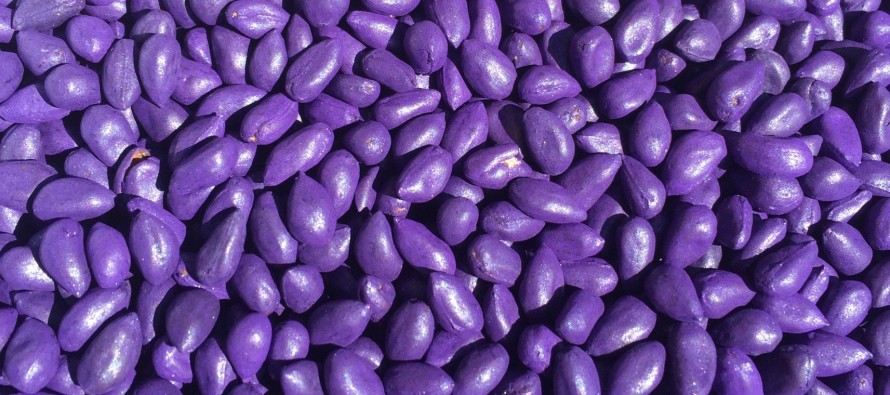Seed Treatments and Thrips 2016: Expectations

Related Articles
- Fertilizing Cotton with Poultry Litter 5
- Mississippi Cotton Insect Situation of 2010: A Look Back 3
- Bayer CropScience-O.A. Cleveland Weekly Cotton Commentary 0
Latest Tweets
Although commodity prices have not been exciting for any crop we grow, Mississippi is expected to see cotton acres increase as much as 40% this year. As we have been traveling the meeting circuit, the common denominator has been, “What inputs can we cut in an off year?” This has been asked of all crops lately, not just cotton. It seems that seed treatments are the first thing that comes up during this conversation in every crop; however, this is not a viable option in cotton.
Over the years many have questioned whether the use of a seed treatment is considered IPM because they are used prior to the onset of a problem. In our area, and across most of the cotton belt, thrips are considered the number one pest of seedling cotton. The species that we encounter greater than 90% of the time in Mississippi is tobacco thrips. The probability of having a thrips infestation in cotton is 100%. Therefore, preventative use of seed treatments is a standard practice and is very appropriate. Data from more than 35 trials in Mississippi shows a 115 lbs. lint yield advantage when thrips are controlled with a seed treatment.
Thrips control options are limited with the only options being preventative seed treatments or foliar rescue sprays of Bidrin, Orthene, Dimethoate, or Radiant.
Since the loss of aldicarb a few years ago, there are only two seed treatment options: Neonics and acephate. Commonly used neonics include thiamethoxam (Cruiser, Avicta, etc.) or imidacloprid (Gaucho, Aeris, etc.) either alone or in combination with a nematicide. In 2011, we began observing reduced tobacco thrips control with the active ingredient thiamethoxam against tobacco thrips. Since that time, resistance in tobacco thrips to thiamethoxam has been confirmed through laboratory bioassays. As a result, we have switched over almost exclusively to imidacloprid based products. Many have wondered how long this product will hold up given that it is in the same class of chemistry as thiamethoxam. In 2015, we began to see a decline in efficacy with imidacloprid in select trials. This phenomenon was not extremely widespread but it did get our attention. Laboratory bioassays suggest that we could potentially be seeing the beginning stages of imidacloprid tolerance or resistance with tobacco thrips as well. This is not confirmed but you need to be aware of it and plan appropriately. It is important to remember that with both thiamethoxam and imidacloprid seed treatments, this only applies to tobacco thrips. This in effect, makes it only a cotton problem and would not transfer over to soybeans or corn.
What to do in 2016
We no longer recommend thiamethoxam in Mississippi on cotton (still an option on other crops). Aeris treated seed is our first option but this is only available on Stoneville brands. Although Aeris contains imidacloprid, the thiodicarb component also has thrips activity and it has performed very well even where imidacloprid has not. If Aeris is not an option, I would strongly consider having your dealer overtreat your imidacloprid treated seed with acephate. We have been looking at this option for a number of years and it has looked good. Acephate alone controls thrips but the residual is much shorter and the likelihood of follow up foliar applications is high. One consideration with overtreating seed with acephate: YOU CANNOT RETURN IT. Finally, you have foliar rescue treatments as an option. I would personally much rather use the overtreatment of acephate and hope to avoid foliar sprays altogether as some foliar sprays can flare secondary pests such as spider mites. Incidence of these secondary pests often requires further sprays which can be expensive. The best foliar insecticide application timing for thrips control is the 1-2 leaf cotton stage for maximum economic returns. However, this does not line up very well with residual herbicide applications so insecticide application is often considered an “extra trip”. You also may see big differences in varietal responses to thrips feeding. We confirmed last year that certain varieties seem to exhibit some host plant resistance to thrips. This will be investigated in much greater detail in 2016.
An important thing to remember is that the first few weeks after plant emergence are critical to set the crop up for the rest of the year. Poor seedling growth will almost always delay maturity and make plant bug management much more difficult. Let’s get 2016 cotton season off to a good start with good thrips control.
Advantages and Disadvantages of Thrips Control Options





Did you evaluate “Avicta® Elite Cotton Plus with Vibrance® seed treatment” ?.
http://www.syngenta-us.com/seed-treatment/avicta-elite-cotton-plus-with-vibrance